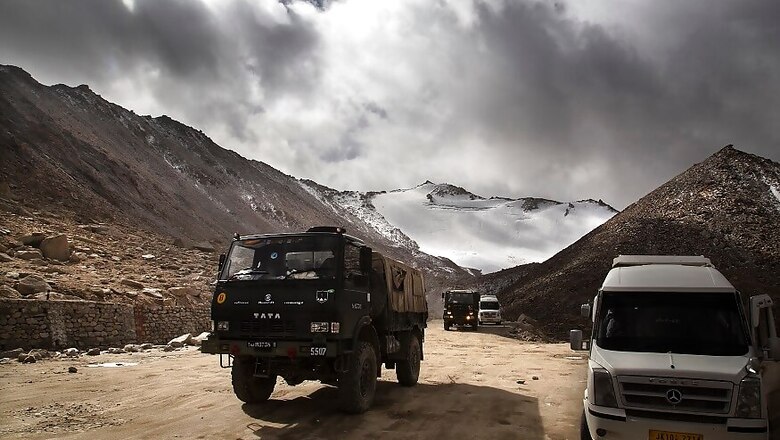
views
India and China accused each other Monday of military provocation on their contested Himalayan border where a deadly showdown erupted in June — even as commanders from the two sides held talks aimed at easing tensions.
China’s military said Indian troops had crossed the border Monday near Pangong Tso, a lake at 4,200 metres (13,500 feet), and engaged in “open provocation and caused the border situation to become tense”.
“The Chinese military is taking necessary countermeasures,” the People’s Liberation Army’s regional command said in a statement, accusing India of “seriously violating China’s territorial sovereignty”.
A satellite imagery shared by the open source intelligence analyst, who tweets as @detresfa, shows a construction at the tri-junction of the borders of India, Bhutan and China, at a distance of about 100 km from Doka La (Doka pass) and Naku La (Naku pass).
The construction is said to be a heliport that China is building in close proximity to two new air defence positions that cover sensitive stretches of the disputed border in Doklam and Sikkim sectors.
Suspected PLA heliport infrastructure spotted part of an ongoing investigation near the #Doklam region of the #India #China #Bhutan tri junction, this support unit could sustain all weather & rapid troop deployments in the sector along with improving surveillance operations https://t.co/aOeZ3deGzI pic.twitter.com/ycS32tFxJe— d-atis☠️ (@detresfa_) August 31, 2020
This heliport is apparently almost equidistant from the two sites at which the People’s Liberation Army (PLA) is developing surface-to-air missile facilities.
According to a report in Hindustan Times, the new missile facilities are located roughly 50 km from Naku La (Naku pass), where troops from the two countries had clashed on May 9, and Doka La (Doka pass), close to the Doklam plateau that was the scene of a 73-day military standoff between India and China in 2017. Four Indian and seven Chinese soldiers were injured in the clash at Naku La, the second such reported incident since the current standoff began in early May.
Earlier on Monday India’s defence ministry said Chinese troops had “carried out provocative military movements to change the status quo” in the eastern Ladakh region over the weekend.
Military commanders from the two sides held talks Monday in a new bid to ease tensions between the nuclear-armed neighbours, who fought a border war in 1962 and have staged regular high altitude clashes since.
China did not confirm Saturday’s incident, but the foreign ministry said its troops have “always strictly respected” the unofficial border known as the Line of Actual Control.
On June 15, troops from the two sides fought hand-to-hand combat in Ladakh in which 20 Indian troops were killed. China acknowledged casualties but did not give figures.
The two sides blame each other for recent clashes and the two armies have since poured tens of thousands of troops into the region. Military and diplomatic talks are at an apparent stalemate.
Massive troop buildup
Pangong Tso is one of several hotspots where troops have massed since June. “Indian troops pre-empted this PLA activity on the southern bank of Pangong Tso lake, undertook measures to strengthen our positions and thwart Chinese intentions to unilaterally change facts on ground,” said India’s defence ministry.
Senior officers met at a border post near the scene of the standoff on Monday, it added. According to Indian military sources, speaking on condition of anonymity, Indian troops pushed back Chinese troops who crossed the Line of Control.
“PLA soldiers walked into our area near the south bank of Pangong, but our soldiers were prepared and quickly pushed them back without any violence,” said one source. “They tried to come in again several hours later but we stood firm. There has been no such confrontation in this area in the past.”
China’s foreign ministry said Chinese troops “have always strictly respected the Line of Actual Control and never crossed the line”. “Border troops from both sides have maintained communication over issues on the ground,” foreign ministry spokesman Zhao Lijian told a press briefing.
Amid calls for boycotts of Chinese goods, India has stepped up economic pressure on China since the June battle and repeatedly warned that relations would suffer unless its troops pull back.
India has banned at least 49 Chinese owned-apps — including the TikTok video platform — frozen Chinese firms out of contracts and held up Chinese goods at customs posts. China has complained about the action and warned that Indian consumers will suffer.
(With inputs from AFP)




















Comments
0 comment